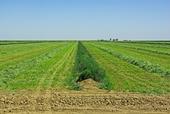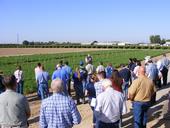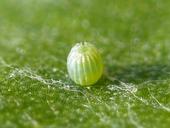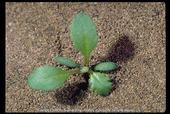- Author: Nicholas Clark
- Contributor: Michelle Leinfelder-Miles
- Contributor: Joy Hollingsworth
- Contributor: Anthony Fulford
- View More...
REGISTER NOW
NOTE: DUE TO COVID, PRE-REGISTRATION IS REQUIRED TO ATTEND
NO COST TO ATTEND
Pre-register by clicking or following the link immediately below:
https://surveys.ucanr.edu/survey.cfm?surveynumber=35502
Lunch will be served, but...
- Author: Nicholas Clark

SIGN UP TODAY!
Date: September 23, 2020
Time: 8:30 AM - 12:00 PM
Location: Zoom Meeting
Registration: Click here to register.
Registration fee: $9.23
What: UC Cooperative Extension will provide updates on applied research in alfalfa variety, irrigation, and pest management; sorghum and its use in dairy feeding; sugar beets and safflower as winter forages; and personal protective equipment in a time of...
- Author: Nicholas Clark
- Author: Lynn Sosnoskie
- Author: Joy Hollingsworth

2019 Annual Alfalfa and Forage Field Day
Thursday, September 19, 2019
UC Kearney Agricultural Research and Extension Center, Parlier
9240 S. Riverbend Ave.
NO COST TO ATTEND
Get ready for a half day of forage research demonstrations and educational presentations in the field and in the classroom. The meeting will begin early morning and finish through lunch.
Lunch will be...
- Author: Rachael Freeman Long
- Author: Ian Grettenberger

Painted lady butterflies (Vanessa cardui) are dazzling us with color, but surprising us with sporadic finds of caterpillars on crops this year, including alfalfa, pistachio, walnuts, artichokes, and hybrid sunflower (see IPM Advisor Emily Symmes blog: What's that Caterpillar on my Weeds?).
Painted lady caterpillars primarily feed on weedy hosts such as Malva (cheeseweed), plantago, cocklebur, star thistle, and some legumes, especially lupines, but NOT alfalfa or close relatives. They do not breed on alfalfa or tree crops, so while one may find larvae in these crops, they should not cause any...
- Author: Thomas Getts
- Author: Rachael Freeman Long
- Author: Lynn M. Sosnoskie

As you're thinking about winter weed management in alfalfa production, keep in mind the need for common groundsel control.
Groundsel (Senecio vulgaris) is highly toxic to livestock at all growth stages because it contains pyrrolizidine alkaloids (PA) which can cause chronic and irreversible liver disease in animals. Cattle and horses are most sensitive to the PAs, followed by pigs and chickens, and then sheep, goats and turkeys, which are the least sensitive to PA toxicity. Younger animals are typically more sensitive than adults. Therefore, the identification and control of groundsel in forages is important for preventing livestock PA poisonings.
What is...



